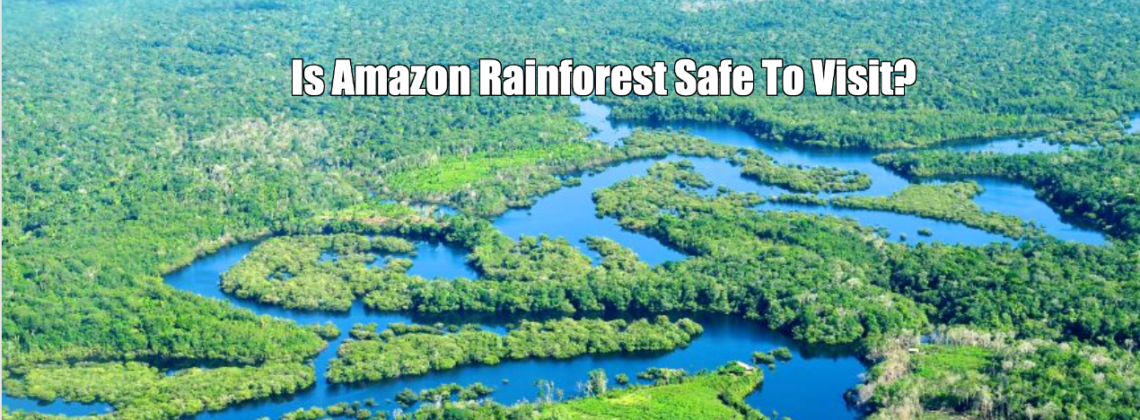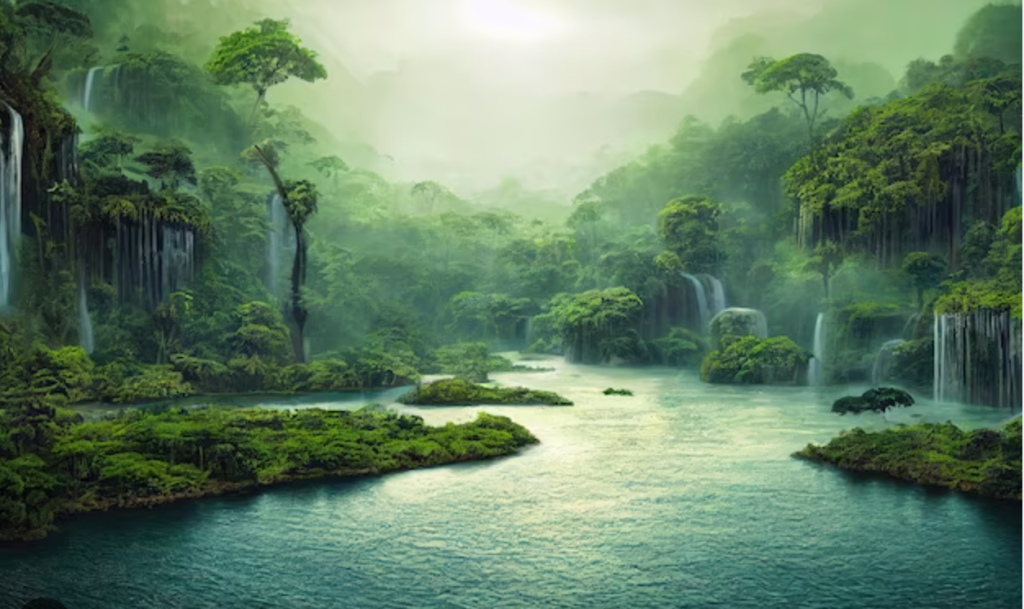
Is Amazon Rainforest Safe?
Summary
Yes, Amazon rainforest, an area of unparalleled biodiversity and natural beauty, can be safe to visit with proper planning and precautions. Travelers should choose reputable tour operators experienced in rainforest travel, as they understand the unique challenges and risks of the region, including navigation, wildlife, and climate conditions.
It’s essential to be prepared for the humid and often unpredictable weather, as well as for encounters with wildlife, which can range from harmless to potentially dangerous.
Vaccinations and precautions against diseases like malaria and yellow fever are advisable.
The political and social climate in the region should also be considered, as some areas may have higher risks of crime or conflicts. Respecting local customs, especially in indigenous territories, is crucial.
With these considerations in mind, visiting the Amazon can be a safe, enriching, and unforgettable experience, offering a glimpse into one of the world’s most extraordinary ecosystems.
Pros
The Amazon rainforest, one of the most significant natural resources on the planet, offers a range of benefits (pros) but also faces several challenges (cons). Understanding these is crucial for making informed decisions about its conservation and use.
- Biodiversity: The Amazon is the most biodiverse region on Earth, home to a vast array of flora and fauna, many of which are found nowhere else. This biodiversity is crucial for ecological balance and the health of the planet.
- Climate Regulation: Acting as a giant carbon sink, the Amazon plays a critical role in global climate regulation. It absorbs massive amounts of carbon dioxide, which helps mitigate climate change.
- Oxygen Production: The Amazon is often referred to as the “lungs of the planet” because it produces a significant portion of the Earth’s oxygen through photosynthesis.
- Medicinal Resources: Many modern medicines are derived from plants found in the Amazon. Its biodiversity holds potential for more medical discoveries, especially in the field of cancer, HIV, and other critical illnesses.
- Water Cycle: The Amazon greatly influences the global water cycle. It releases water vapor into the atmosphere, which contributes to rainfall locally and in faraway regions.
- Cultural and Indigenous Importance: The rainforest is home to numerous indigenous communities, preserving unique cultures and ways of life that are integral to human diversity.
- Ecotourism: The Amazon attracts tourists from around the world, offering ecotourism opportunities that can be sustainable and beneficial for local economies.
Cons
- Deforestation: Driven by logging, mining, agriculture, and cattle ranching, deforestation is a major issue, leading to loss of biodiversity, habitat, and contributing to climate change.
- Climate Change Impact: Global warming poses a significant threat to the Amazon, potentially leading to changes in its ecosystem and turning parts of the forest into savannah.
- Illegal Activities: Illegal logging, mining, and wildlife trafficking are rampant in some parts of the Amazon, often driven by global demand for resources.
- Fires: Large-scale fires, many set intentionally for land clearing, have devastating effects on the forest, wildlife, and contribute to carbon emissions.
- Threats to Indigenous Peoples: Development and exploitation of the rainforest often encroach on indigenous lands, threatening their way of life and sometimes leading to conflict.
- Disease and Health Risks: The dense and biodiverse environment of the rainforest can be a breeding ground for diseases, some of which can affect humans.
- Accessibility and Management Challenges: The sheer size and remoteness of the Amazon make it difficult to manage and protect effectively, especially against illegal activities.
In conclusion, the Amazon rainforest is a priceless ecological treasure with far-reaching benefits for the planet. However, it faces significant threats that require global attention and action. Balancing the need for conservation with sustainable development is crucial to ensure the health and survival of this vital ecosystem.
The Amazon rainforest, often referred to as the “lungs of the Earth,” is an immense and biologically rich region that spans several countries in South America. It is home to an incredibly diverse range of flora and fauna, many of which are not found anywhere else in the world. The rainforest plays a crucial role in global climate regulation by absorbing large amounts of carbon dioxide and producing oxygen.
However, the Amazon rainforest has been facing significant threats over the years, which raise concerns about its safety and future:
Amazon Deforestation
This is one of the biggest threats to the Amazon. Large areas of the forest are being cleared for agriculture, cattle ranching, and logging. Deforestation leads to habitat loss for countless species and contributes to climate change, as trees that absorb carbon dioxide are destroyed.
Climate Change
The effects of global climate change are impacting the Amazon. Changes in rainfall patterns and temperatures can alter the delicate balance of the rainforest ecosystem. There’s also the risk of turning large parts of the forest into a savannah-like ecosystem, which would release massive amounts of carbon into the atmosphere.
Mining and Drilling in Amazon
Mining and oil drilling activities in the Amazon not only lead to deforestation but also pose a risk of pollution and contamination of the environment. These activities can have devastating impacts on local wildlife and indigenous communities.
Fires
In recent years, there have been significant fire outbreaks in the Amazon. While some fires are natural, many are started intentionally to clear land for farming or cattle ranching. These fires can get out of control and cause widespread damage.
Biodiversity Loss
The Amazon is one of the most biodiverse places on Earth. The destruction of habitats through deforestation, fires, and other human activities leads to the loss of species, many of which have not even been studied yet.
Amazon Rainforest Impact on Indigenous Communities
The Amazon is home to numerous indigenous communities, some of which have little or no contact with the outside world. These communities depend on the forest for their livelihoods, culture, and traditions. The destruction of the Amazon threatens their way of life.
Political and Economic Factors
The policies of governments in Amazon countries can significantly impact the rainforest. Economic pressures and political decisions can either contribute to the protection of the Amazon or to its further destruction.
Conservation Efforts
There are numerous conservation efforts underway to protect the Amazon. These include establishing protected areas, enforcing laws against illegal logging and mining, and promoting sustainable land-use practices. International cooperation and funding are crucial for these efforts to succeed.

Can you Swim in the Amazon River?
Swimming in the Amazon River can be a remarkable experience, but it’s important to approach it with caution due to various risks. The river is home to diverse wildlife, including some potentially dangerous species like piranhas, anacondas, and caimans.
While attacks on humans are rare, they can happen, particularly if you enter the water in areas where these animals are abundant. Another concern is the presence of parasites, such as the candiru, a small fish infamous for lodging itself in the urethra of swimmers.
The river’s strong currents and unpredictable depths also pose a risk, especially for those unfamiliar with the environment.
Additionally, the water quality can vary, with some areas polluted. To ensure safety, it’s advised to swim only in designated areas, ideally under the guidance of local experts who know the safest and most suitable spots. With these precautions, swimming in the Amazon can be a thrilling and safe part of an Amazon adventure.
How Deep is the Amazon River?
The Amazon River, one of the world’s largest and most powerful rivers, varies greatly in depth due to its vast size and changing seasons. On average, the river’s depth is about 20 to 50 meters (65 to 165 feet). However, this can fluctuate significantly. During the rainy season, the river can swell immensely, flooding surrounding areas and increasing its depth. In some places, especially along the main channel near Óbidos, Brazil, the depth can reach up to 100 meters (about 330 feet).
This makes the Amazon not only one of the longest and widest rivers in the world but also one of the deepest. Its depth, combined with its fast-flowing nature and extensive network of tributaries, contributes to its massive volume and the extensive biodiversity it supports. This variability in depth is one of the many factors that make the Amazon River a complex and dynamic ecosystem.
Also read:Is Abbey Wood Safe to Live or Visit?
Conclusion
In summary, the Amazon rainforest is facing a multitude of threats that jeopardize its health and survival. While there are ongoing efforts to protect and conserve this vital ecosystem, the challenges are significant and require concerted and sustained global action. The future of the Amazon is not just a regional concern but a global one, given its critical role in the Earth’s climate system and biodiversity.
